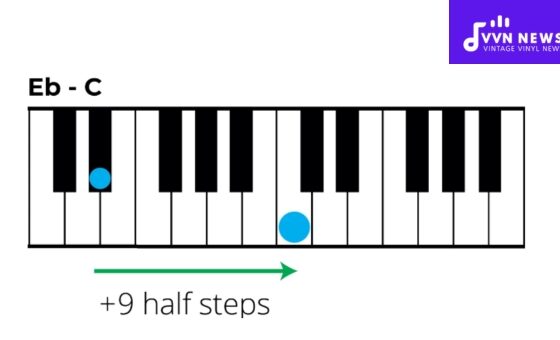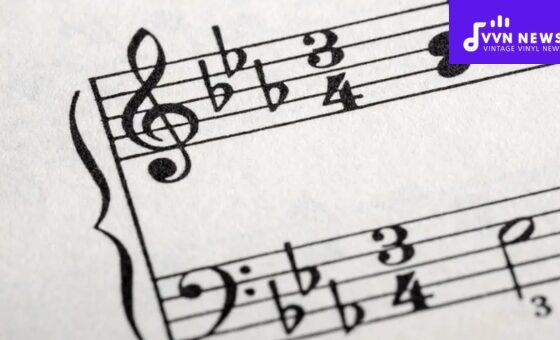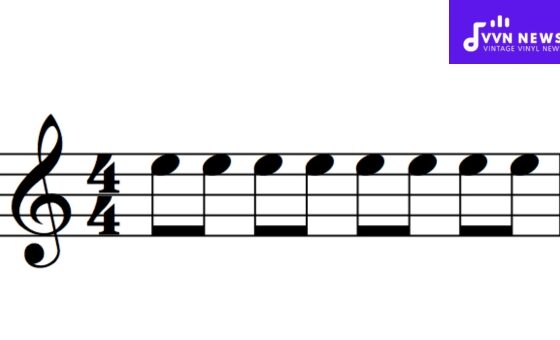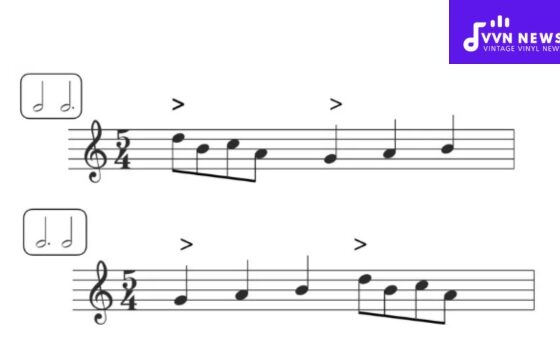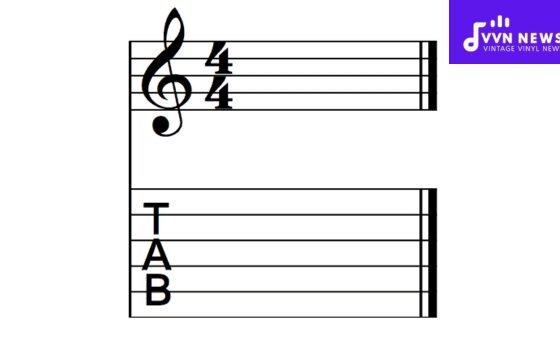It’s a captivating experience to listen to our favorite tune or song, to feel the rhythm, harmony, and melody course through our veins.
But have you ever thought about what’s behind these beautiful notes? To truly appreciate music, you might want to delve beyond just listening.
Let’s answer one of the most common queries: how to read music?
Experience firsthand the languages of composers and musicians from centuries past. Rest assured you don’t need any musical background, it’s simpler than it seems.
So strap in as we embark on this fascinating journey together towards deciphering one of humanity’s most passionate forms of expression – music.
Why Learning to Read Music is Important?
Music is a universal language that has the power to connect people across cultures and generations.
If you’re an aspiring musician or simply a fan of music, learning to read sheet music is essential for a deeper appreciation of the art form.
Here are some reasons why learning to read music is important:
1. Communication:
Sheet music serves as a written communication tool that allows musicians to perform complex compositions accurately.
By learning how to read music, you can effectively communicate with other musicians, follow along during rehearsals and performances, and collaborate seamlessly.
2. Interpretation:
Sheet music provides details on how a piece of music should be interpreted, including dynamics (volume), tempo (speed), phrasing, articulation, and more.
These notations, can bring out the intended emotions and nuances in a composition, adding your interpretation while honoring the composer’s intentions.
3. Versatility:
Learning to read sheet music opens up doors to exploring different genres of music and playing various instruments.
Whether you’re interested in classical, pop, jazz, or any other genre, being able to read sheet music gives you access to a wide range of musical styles and compositions.
4. Self-expression:
Reading sheet music allows you to express your creativity by composing your music or improvising within established compositions.
It gives you the tools to bring your musical ideas to life and convey your emotions through written notation.
5. Education and Career Opportunities:
For those pursuing a career in the music industry, reading sheet music is an essential skill. It can open doors to opportunities such as becoming a session musician, working in orchestras or ensembles, teaching at schools or universities, composing for films or commercials, and more.
By acquiring the skill of reading sheet music, you equip yourself with a valuable tool that enhances your musicality and opens up endless possibilities for growth and self-expression in the world of music.
So, start your musical journey today by learning how to read music.
Also Read: How To Transpose Music? [Simplifying Key Changes In Songs]
What is Musical Notation?

Musical notation refers to the written representation of music, using a set of symbols and markings that convey specific musical instructions.
It serves as a blueprint for musicians to perform a piece of music accurately and expressively.
The elements of musical notation are crucial for reading and interpreting sheet music effectively.
Elements of Musical Notation
The staff consists of five horizontal lines and four spaces. It acts as a framework on which notes, rests, and other musical symbols are placed.
Each line and space on the staff represents a different pitch, allowing musicians to visualize how high or low a note should be played.
Clefs:
Clefs are symbols placed at the beginning of the staff to indicate the pitch range of notes. The two most common clefs are the treble clef (♩) and bass clef (⇓).
The treble clef is used for higher-pitched instruments like the violin or flute, while the bass clef is for lower-pitched instruments like the cello or tuba.
Notes:
Notes represent individual pitches in music. Each note is represented by an oval-shaped head placed either on a line or within a space on the staff.
The position of the note head determines its pitch. Notes can have various durations, indicating how long they should be played.
Key Signatures and Time Signatures
Here is the Brief about the key signatures and Time signatures:
Key Signatures:
Key signatures indicate which notes in a composition are altered throughout the piece. They are represented by sharps (♯) or flats (♭) placed at the beginning of each staff line.
Key signatures establish a tonal center or key for a composition, helping musicians which note to play throughout.
Time Signatures:
Time signatures dictate how many beats are in each measure (or bar) of music, as well as which type of note receives one beat.
They consist of two numbers stacked on top of each other at the beginning of each staff line.
The top number represents the number of beats per measure, while the bottom number indicates the type of note that equals one beat.
By familiarizing yourself with these elements of musical notation, you will be able to navigate sheet music with ease.
Remember that practice is key when it comes to reading musical notation, so don’t be afraid to start with simple exercises and gradually work your way up.
With dedication and patience, you’ll soon find yourself confidently reading and performing music from a variety of genres.
Also Read: How To Transpose Treble To Bass Clef [Music Guide]
How to Read Music?
Reading sheet music might seem intimidating at first, but with a step-by-step approach, it becomes much more manageable.
Let’s break it down into three key components: deciphering the staff and clefs, identifying types of notes and rests, and interpreting tempo, dynamics, and articulation marks.
Deciphering the Staff and Clefs
The Staff: The staff is a set of horizontal lines on which musical notes are positioned. It consists of five lines and four spaces between the lines.
Treble Clef: The treble clef is typically used for higher-pitched instruments like the piano’s right hand or instruments such as the flute or violin. Notes on the treble clef staff represent higher frequencies.
Bass Clef: The bass clef (????) is commonly used for lower-pitched instruments like the piano’s left hand or instruments such as cello or bass guitar. Notes on the bass clef staff represent lower frequencies.
Identifying Types of Notes and Rests
Notes: Notes are represented by symbols placed on the staff indicating their pitch and duration. Here are some common note symbols:
- Whole Note (????): Represents four beats.
- Half Note (????): Represents two beats.
- Quarter Note (♩): Represents one beat.
- Eighth Note (♪): Represents half a beat.
- Sixteenth Note (????): Represents a quarter of a beat.
Rests: Rests indicate periods of silence in music. Just like notes, they come in different durations:
- Whole Rest (????): Indicates four beats of silence.
- Half Rest (????): Indicates two beats of silence.
- Quarter Rest (????): Indicates one beat of silence.
- Eighth Rest (????): Indicates half a beat of silence.
- Sixteenth Rest (????): Indicates a quarter of a beat of silence.
Interpreting Tempo, Dynamics, and Articulation Marks
Tempo: Tempo indicates the speed at which a piece should be performed. Common tempo markings include:
- Allegro: Fast and lively.
- Moderato: Moderate speed.
- Adagio: Slow and gentle.
- Presto: Very fast.
Dynamics: Dynamics represent the volume or intensity of the music. Some common dynamic markings include:
- Piano (p): Soft.
- Forte (f): Loud.
- Mezzo Piano (mp): Moderately soft.
- Mezzo Forte (mf): Moderately loud.
Articulation Marks: Articulation marks describe how notes should be played in terms of duration and emphasis. Here are a few examples:
- Staccato: Short and detached notes.
- Legato: Smoothly connected notes.
- Accent (> or ^): Emphasize the note.
Remember, these are just a few examples, and there are many more symbols used in sheet music to convey musical expression.
With these fundamental elements – deciphering the staff and clefs, identifying types of notes and rests, and interpreting tempo, dynamics, and articulation marks – you’ll be able to read sheet music with confidence.
Practice regularly, start with simple melodies, and gradually progress to more complex compositions to improve your reading skills.
With time and dedication, reading music will become second nature to you.
Also Read: How To Transpose Bass Clef To Treble Clef [A How-To Guide]
How to Read the Treble Clef and Bass Clef

When it comes to reading sheet music, two of the most commonly used clefs are the treble clef and bass clef.
The treble clef is primarily used for higher-pitched instruments like the flute, violin, or piano’s right hand, while the bass clef is used for lower-pitched instruments like the cello, double bass, or piano’s left hand. In this section, we will explore how to read these two clefs.
Recognizing the Treble Clef
The treble clef is also known as the G clef because it wraps around the second line from the bottom of the staff.
Here are some key points to remember when reading the treble clef:
- The lines of the staff in treble clef represent musical notes E-G-B-D-F (Every Good Boy Does Fine).
- The spaces between the lines represent musical notes F-A-C-E (Face).
- Middle C falls on a ledger line below the staff in treble clef.
- To identify higher or lower pitches above or below middle C, additional ledger lines may be added above or below the staff.
The Bass Clef
The bass clef is also known as the F clef because it wraps around and emphasizes the fourth line from the bottom of the staff where F is placed.
Here’s what you need to know about reading bass clef:
- The lines of the staff in the bass clef represent musical notes G-B-D-F-A (Good Boys Do Fine Always).
- The spaces between lines represent musical notes A-C-E-G (All Cars Eat Gas).
- Middle C falls on a ledger line above the staff in the bass clef.
- Additional ledger lines can be used to indicate pitches above or below middle C.
Connecting Treble and Bass Clef
When playing an instrument that requires reading both the treble and bass clef, it’s essential to understand how they relate to each other:
- Middle C is shared by both clefs, albeit in different positions (treble clef below, bass clef above).
- The notes in treble clef generally represent higher-pitched melodies or the right hand on the piano.
- The notes in the bass clef typically represent lower-pitched sounds or the left hand on the piano.
- To transition between the two clefs smoothly, you’ll need to practice recognizing and playing notes that move from one staff to another.
Practice is vital when learning to read both the treble and bass clefs. Start with simple exercises and gradually progress to more complex musical pieces.
By becoming proficient in reading these two clefs, you’ll expand your musical repertoire and be able to play a more extensive range of music on various instruments.
Also Read: 10 Tips On How To Teach Music Theory? [Educator’s Guide]
How to Recognize Rhythm in Sheet Music
Rhythm in sheet music is crucial for accurately interpreting and performing a piece of music.
Rhythm gives music its groove, pulse, and energy, providing structure and movement to the composition.
Here are some key points to help you recognize rhythm in sheet music:
1. Note Duration
In sheet music, notes are represented by different symbols indicating their duration.
Common note durations include quarter notes (♩), half notes (½), eighth notes (♪), and sixteenth notes (????). The duration of a note determines how long it is played or held.
2. Time Signatures
Time signatures appear at the beginning of a piece of sheet music and indicate the meter or rhythmic pattern for the composition.
They consist of two numbers stacked vertically, such as 4/4 or 3/4. The top number represents the number of beats per measure, while the bottom number denotes which note value receives one beat.
3. Counting Beats
It’s important to be able to count beats accurately. The most common method is using numbers and syllables to represent each beat within a measure.
For example, in 4/4 time, each quarter note receives one beat and can be counted as “1-2-3-4.”
4. Rests
Rests are symbols in sheet music that indicate periods of silence or pauses between musical phrases.
Rests have the same durations as their corresponding notes but denote silence instead of sound. For example, a quarter rest (????) indicates one beat of silence.
5. Ties and Dotted Notes
Ties are curved lines connecting two adjacent notes of the same pitch.
Tied notes are held for their combined duration, eliminating the need to re-articulate the same pitch multiple times.
Dotted notes, on the other hand, have a dot placed to the right of their notehead, indicating that their value is increased by half.
For instance, a dotted half note (½.) would be equal to three beats in 4/4 time.
6. Syncopation
Syncopation refers to the deliberate disruption of the regular rhythmic pattern, often by emphasizing weak or off-beat notes.
Syncopated rhythms add complexity and interest to music and can be identified by their unexpected accents.
7. Polyrhythms
Polyrhythms occur when two or more contrasting rhythms are played simultaneously.
These overlapping patterns create intricate and complex rhythmic textures, commonly found in genres like jazz and African music.
8. Practice with a Metronome
To improve your rhythm reading and accuracy, practice with a metronome.
A metronome provides consistent beats at your desired tempo and helps you develop a steady sense of time.
With these key elements of rhythm in sheet music, you’ll be able to read and interpret musical rhythms more effectively.
Practice regularly, listen attentively to different rhythmic patterns in music, and experiment with variations to enhance your rhythmic skills.
Rhythm is at the heart of music, so embrace its groove and let it guide you on your musical journey.
Also Read: How To Manage Stress and Overcome Stage Fright?
FAQs about Reading Music
What is the purpose of the staff and clefs in sheet music?
The staff is a set of five horizontal lines that provide a framework for music notation. Clefs, such as the treble clef and bass clef, indicate the pitch range of notes and help determine their placement on the staff.
Can I learn to read music even if I don’t play an instrument?
Absolutely! Learning to read music is not exclusive to instrument players. It can benefit anyone interested in appreciating musical compositions, regardless of whether they play an instrument or sing.
Do I need to have a perfect pitch to read music?
No, having a perfect pitch is not necessary for reading sheet music. The ability to identify pitches by ear (known as relative pitch) can be developed through practice and training.
How long does it take to become proficient in reading sheet music?
The time it takes to become proficient in reading music varies from person to person. With consistent practice and dedication, you can start gaining a solid knowledge of musical notation within a few months.
Are there any shortcuts or tips for learning how to read music more easily?
Breaking down the process into small steps, practicing regularly, and seeking guidance from a qualified teacher or online resources can accelerate your learning progress. Additionally, listening actively to music while following along with sheet music can help develop your ear for recognizing note patterns and rhythms.
Conclusion
Learning to read music is an essential skill for musicians and music enthusiasts alike.
With the elements of musical notation, such as the staff, clefs, notes, time signatures, and key signatures, you can effectively communicate with other musicians, interpret compositions accurately, and explore a wide range of musical genres and instruments.
Reading sheet music allows for self-expression, opens up educational and career opportunities in the music industry, and enhances your overall musicality.
So take the time to learn and practice reading sheet music – it will be a rewarding journey that deepens your appreciation for the art of music.




